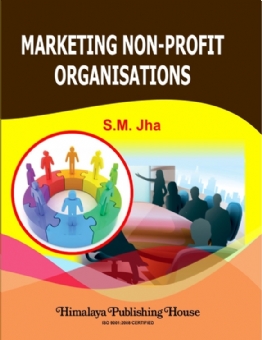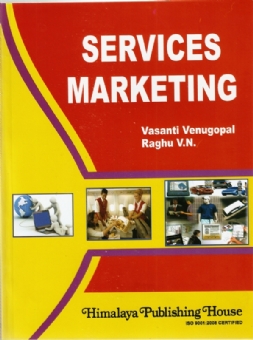An economy on the basis of its evolution can be divided into segments: Primary (Agriculture), Secondary (Manufacturing), and Teritiary (Services). The third segment represents all the supporting and convenience services provided to the customers and the other two segments. This segment can be further divided into three parts : Quasi-domestic services (food and lodgir g), whether performed in home or not; Business services and all the services targeted at involving and improving the consumers. The post-industrial era is all about this seg¬ment. The industries in this segment are manned by white-collar workers, are labour intensive, deal with the consumers and nearly all of them produce an ‘intangible’ product.
A service is usually associated to intangibility. As against goods, it is the performance or the effort that is put in to give customers the benefits without owing the provider. The intangibility has given the service sector a long list of businesses that are varied and different. The chord that binds them together is ‘personalization.’ Thus, where goods are the games played against ‘fabricated nature’, services represent a game played ‘between people.’
But is it necessary to study services separate from goods Yes. The necessity is warranted by the nature and the magnitude of this sector. The services sector is increasing rapidly, almost at the breakneck speed of 30% per annum as compared to the 8% of the manufacturing sector. Its contribution to the economy is also noteworthy. This sector put 35% of the NNP at factor cost in 1987. Its share in the investments in the cognate groups was 18.82% and it yielded 20% of the gross turnover. This positive Input-Output ratio is much more in the industries that are more labour intensive. This sector employs 50% of the working population. Added to this fact is the irony that most of the service units are in the organised sector and hence unaccounted. With the self-employment on the rise this sector is surely growing as it would attract many of the non-working population in this country that stands at a staggering 63% of the total population.
A very important factor in favour of the service sector is its resistance to recession. Services have a stable demand. Excepting a few services like retailing, most of the services maintain their sales level even during recession. The reasons are : (a) During this situation major expenditures are deferred and substituted for services, (b) Services represent a style of living and improve quality of work life which hardly changes in any situation. Even if it changes, a high-value service is replaced by low-value substitutes. The service sector gains anyway.
Financial Services is a major industry. Some aspects of marketing operations have been included in this book. The Problem of marketing mobilization has been dealth in detail by K.C. Rout in his article Mobilization of Deposits by Commercial bank Relevance of Aggressive Marketing It points out that household deposits are shrinkin which is a dangerous signal for the banks as it is a major segment of the market.
Contents :
Section I Services – Characteristics and Marketing Implications
1. Services : Characteristics, Types and Marketing Implications – P.K. Sinha
2. Services Marketing : Strategies and Mix – S. Shiva Ramu
Section II Organisation, Promotion and distribution
3. Organising for Service Marketing – C.M. Ramesh
4. Services Distribution – P.K. Sinha
5. Promotion of Services – Mukesh Chaturvedi
Section III Banking Insurance and Lease
6. Mobilization of Deposits by Commercial Banks Relevance of Aggressive Marketing – K.C. Raut
7. Innovations in Bank Marketing – Some Evidences – S.C. Sahoo
8. Introducing a New Service – Automatic Teller Machines: Applying Lovelock Services Classification Model – S. Subramaniam
9. Marketing of life Insurance in India – S.C. Sahoo
10. Lease Marketing – B.M. Patel
Section IV Health Care
11. Health Care Marketing – S.K. Patro
12. Marketing of Family Planning Services in India –V.K. Thukral, M. Chandra
Section V Tourism and Electricity
13. Management and Marketing of Tourism in India: The Challenge – J.D. Singh
14. More Power to market: A Marketing Approach to Electricity in India, – M.L. Agrawal
Section VI Quality in Services Industry
15. Services Quality : Achievement, Maintenance and Improvement – L.S. Murthy, P.K. Sinha
16. Quality Circles in Services Industry – G.P. Mohapatra
17. Customer Support Services – R.K. Mohanty
Section VII Miscellaneous
18. Designing Services Strategy – P.K. Sinha
19. Learning Principle in Services – K.S. Reddy
20. Marketing Services – The Challenges in India – Walter E. Vieira







